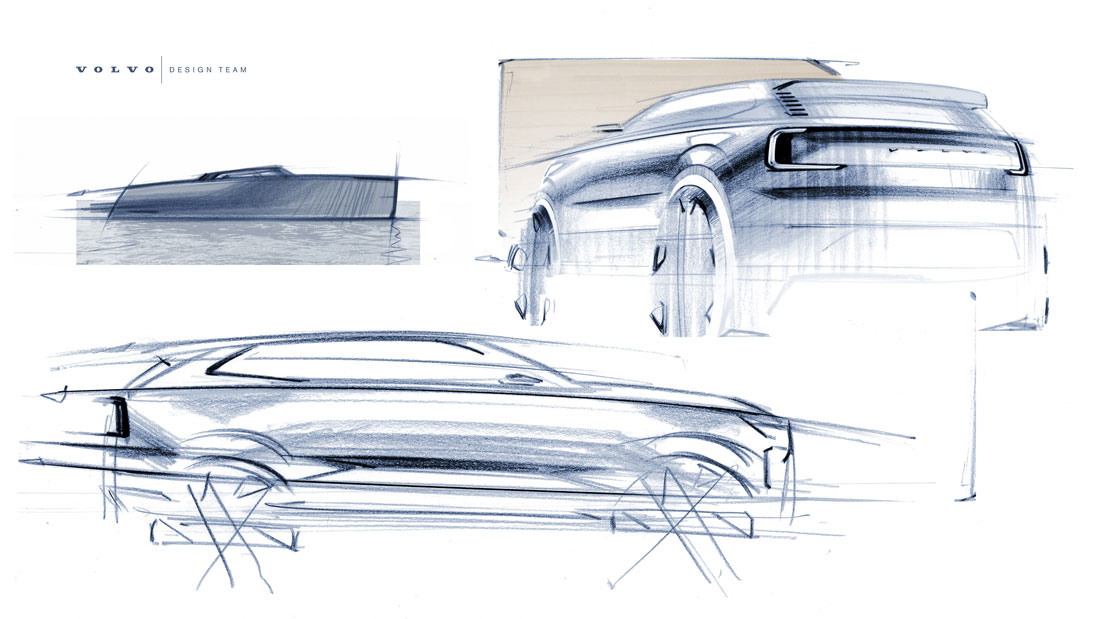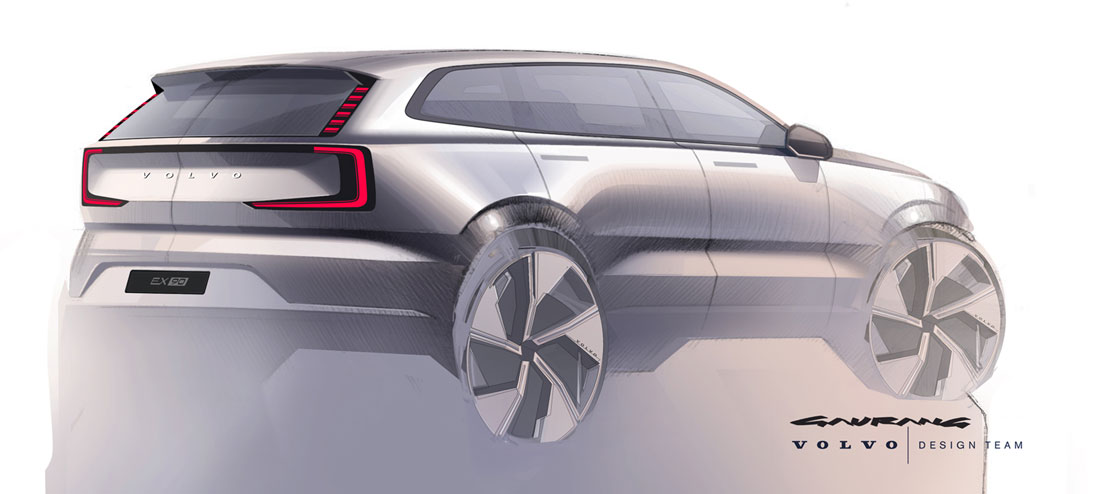“Scandinavian design, safety, technology”. These, according to Robin Page – Volvo’s head of design until next May 1st when he will become senior style consultant and will be replaced by Jeremy Offer – are the four key words of the EX90, the new seven-seater, zero-emission SUV that the Swedish manufacturer is proposing as the successor to the XC90. The 2021 Concept Recharge show car gave a glimpse of new shapes and technological solutions and, indeed, several have been kept for the series production too.
The Concept Recharge Legacy
“Concept Recharge and EX90 bear a very close resemblance to each other. Just look at the front: the completely full grille could be the mouth of a man, while the subtle light signature headlights could be the eyes. We have tried to work deeply on the humanisation of the styling to achieve, even on a superficial level, a better relationship between man and machine”, Page continues. While some typical Volvo styling cues have simply been developed – like the Thor hammer headlamps which now open and change shape at night with the help of matrix LEDs – others are completely new.
Plenty of sensors
Following this line of thought, all the sensors of the driver assistance systems are hidden or concealed by surfaces. All except one: the large LiDar positioned high up in the centre of the windscreen. “The reasons for this choice are functional”, explains Mayer, “it is the best possible position for a LiDar, all others would have limited its range. For Volvo, safety comes first”. Not only. Page points out: “Making such an important element visible, also means communicating that the EX90 is probably the most technological car of the moment. We must never lose sight of our goal: zero accidents, as soon as possible”.
Attention to aerodynamics
The large SUV body of the EX90 induced the designers to refine every possible element that was not in favour of aerodynamics. Hence, in addition to the almost completely closed grille, the designers created low-resistance wheels for the model, handles flush with the bodywork and pillars as sunken into the bodywork as possible. Volvo’s trademark is also represented by the vertical lights, revised for the EX90 into two separate elements with a segmented top section but, Mayer reassures us, “still highly recognisable even at night”.
Bright colours, lots of light
Many similarities between the Concept Recharge and the EX90 can be found in the interior. “The general layout has remained the same – explains Lisa Reeves, Volvo’s head of interior design –. The two displays are in the same position (horizontal for the 11-inch instrumentation, vertical for the 15-inch infotainment in the centre of the dashboard) and there is a sense of modernity, peace and tranquillity thanks to the light colours, the recycled materials, plenty of light in the cabin and the attention to detail typical of Scandinavian design”.
Only necessary information
Speaking of sustainability, the EX90 is equipped with natural materials like resins and wood and there are 48 kilograms of recycled plastic, most of it from PET bottles, used by Volvo for floor mats and other upholstery. “To add to the ambience, the wooden inserts are backlit and travelling at night is a truly unique experience”, continues Lisa Reeves, emphasising that Scandinavian minimalism remains at the heart of Volvo’s styling philosophy, despite a few pleasant twists in the plot. The same minimalism has been sought in the development of the user experience, as Thomas Stovicek, Volvo’s Head of UX, tells us: “We chose to show drivers only what is necessary and at the right time. They can decide whether they want to add or remove information and they can also take advantage of a large Head Up Display where to view it. The real luxury today is to be able to choose to focus on the essentials knowing that, when in need, you can have everything”.
(Full article in A&D no. 259)
















